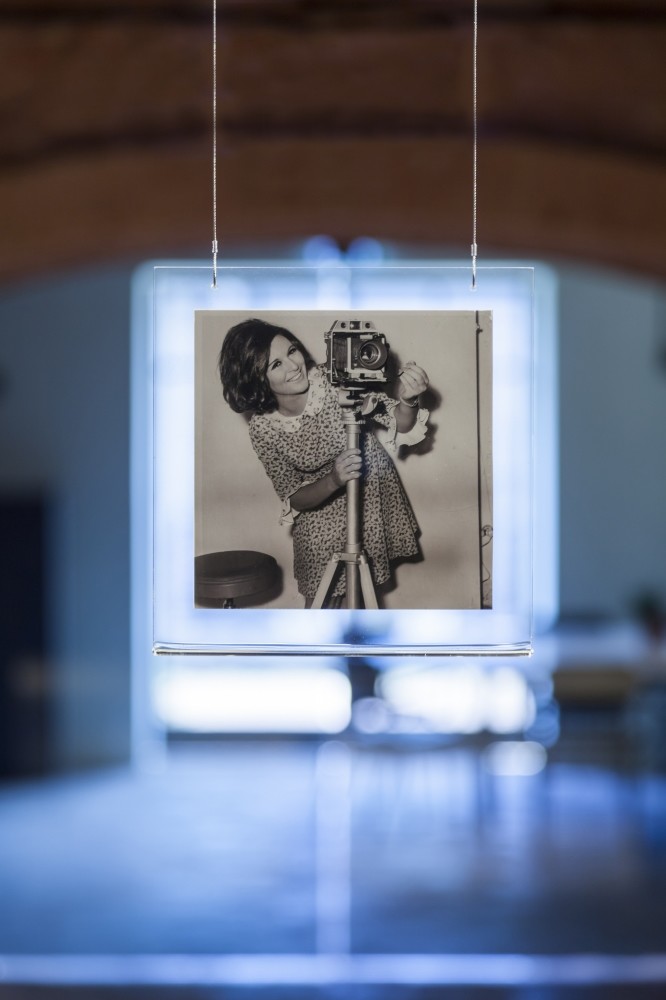© Turkuvaz Haberleşme ve Yayıncılık 2025
In Kazuo Ishiguro's 2005 dystopia, "Never Let Me Go," three students at a boarding school in England become close friends and spend their time talking about their fears, sharing secrets, and falling in love. They are raised at the fictional Hailsham School as caretakers, preparing for lives where they will need to donate their bodies in order to keep the "real" people alive and healthy. Soon, one by one they complete their donations and disappear, leaving the protagonist Kathy all alone in England's cold landscape. An unsettling sense of melancholy accompanies their adventures, as the three friends learn that they will have to let each other go at one point. They don't want to, but they will just have to let each other go.

Standing alone in a gallery at Istanbul's Alt Art Space last week, I was reminded of the title of Ishiguro's delicate novel. One of the most striking works in Rania Stephan's exhibition there, which has the same title with Ishiguro's book, shows numerous sites in London captured at dusk by the artist. It was in this city that Soad Hosni, a legendary Egyptian movie star, had spent her last years before dying under mysterious circumstances. In this set of photographs, titled "64 Dusks," Stephan obsessively captures the city at the exact time of the day when the movie star jumped, or was pushed to her death from a London apartment block. Looking at diptychs of cranes and trees, empty parks and London skies defined so strongly by a sense of lack, and disappearance, I felt sad and hopeless. Once upon a time Hosni had wandered the streets of this great city which was now defined, for the artist, by her nonexistence there, more than anything else.
"64 Dusks" is also the title of another work, a video installation displayed in the adjacent room, showing the artist moving around Stuart Towers, the building where Hosni had leapt to her death. "When she died in 2001, I went to London to investigate the scene of her death," Stephan writes in a booklet published for the show. "I took a video camera with me. When I arrived at the scene at dusk, I filmed Stuart Towers for half an hour. The reality of the place revealed none of the tragedy of the story." For this work Stephan took a bus and filmed the neighborhood through an impressionistic aesthetic; the viewer sees the image of the artist's reflection on the window, and her presence in this activity of excavation is constantly reminded to us.
IMDb lists 82 films credited to Hosni's name. Born in 1943, she was called "the Cinderella of Egyptian cinema"; as I watched scenes from her films, I was reminded of our own Türkan Şoray -- a movie star in whose screen performances countless viewers had lived and relived their own experiences as lovers, identifying with her doubts and fears, and enjoying her moments of happiness, mourning her sadness.
If you google Hosni's name, one of the top search results is an article with the ominous title "10 Egyptian artists who died under mysterious circumstances." That piece points to "big question marks" surrounding the Egyptian film star's death: "In 2001, the coroner revealed female hair traces were found between Hosni's nails as well as traces of resistance on her body. Detectives also pointed out that they found her apartment messy. This suggests that her death was a planned murder after it was discovered she was planning to reveal her relationship with Egyptian intelligence."

The 70-minute film is a montage of Hosni's films produced in-between 1959 and 1991.
"Stephan's meticulous selection and weaving of images corresponds with a thorough re-organization of sounds, putting Hosni and her many cinematic guises in the position of narrator for the star's own life and death," the exhibition text reads. To me Stephan's montage seemed like the perfect vessel to represent the passing of time. Watching those meticulously selected and woven images, I was reminded of Christian Marclay's looped 24-hour montage, "The Clock" that debuted at London's White Cube gallery in 2010, and was shown at SALT Beyoğlu in the summer of 2014.
In that film, Marclay had reorganized an unsettlingly large archive of moving images to give a sense of continuous time created through fictional moments taking place in hundreds of different films produced in the course of a century. Stephan's montage, too, is an attempt to sculpt time through moving images. With this montage she has displaced Hosni's death; her presence here as the investigative eye shows a way to deal with the loss of loved ones whom we can't allow ourselves to let go of.
